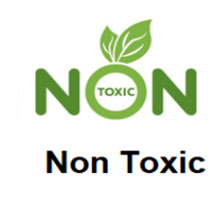Turf Introduction
Problems Commonly Encountered with Artificial Turf
2024-06-14
Problems Commonly Encountered with Artificial Turf
Artificial turf, while offering a durable and low-maintenance alternative to natural grass, is not without its issues. Here are some of the common problems that can arise with artificial turf, particularly in the areas of color, durability, and installation.
1. Color Inconsistency
One significant issue with artificial turf is color inconsistency. This can occur due to manufacturing defects, exposure to sunlight, or even variations in the original color batch. Inconsistent coloration can lead to an unattractive, patchy appearance, affecting the overall aesthetics of the turf.
2. Fade Resistance Issues
Artificial turf is designed to be fade-resistant, but over time, exposure to sunlight and UV radiation can cause the colors to fade. This fading can be uneven, resulting in discoloration and a general loss of vibrancy. Fade resistance issues can be exacerbated by the use of lower-quality turf materials or improper maintenance.
3. Yarn Breakage & Tears
The yarn fibers of artificial turf are susceptible to breakage and tears. This can be caused by sharp objects, heavy traffic, or pets with sharp claws. Yarn breakage and tears can lead to unsightly patches and reduced durability of the turf. Regular inspections and repairs are necessary to minimize these issues.
4. Weak Backing Material
The backing material of artificial turf provides structural support and durability. If the backing material is weak or of poor quality, it can lead to sagging, tearing, or overall failure of the turf. Weak backing material can also affect the installation process, making it difficult to secure the turf firmly in place.
5. Static & Friction Issues
Artificial turf can develop static electricity, causing it to attract dirt, debris, and even pets. This can lead to an unclean appearance and require frequent cleaning. Additionally, friction between the turf fibers and shoes or other objects can cause wear and tear, further reducing the lifespan of the turf.
6. Uneven Seaming
Improper or uneven seaming can be a significant problem with artificial turf installation. If the seams are not correctly aligned or secured, they can become visible, creating an unsightly appearance. Uneven seaming can also lead to weak points in the turf, potentially causing tears or other damage.
7. Poor Drainage & Compaction
Poor drainage and compaction issues can plague artificial turf installations. If the turf is not installed on a properly graded and drained surface, water can accumulate, leading to soggy conditions and potential damage to the turf. Compaction of the turf can also occur due to heavy traffic or improper installation, reducing its resilience and lifespan.
In conclusion, while artificial turf offers many benefits, it is not without its issues. Understanding and addressing these common problems, such as color inconsistency, fade resistance, yarn breakage, weak backing material, static and friction issues, uneven seaming, and poor drainage and compaction, is essential for maintaining a high-quality, long-lasting artificial turf surface. Regular inspections, maintenance, and proper installation practices can help minimize these issues and ensure the turf remains in optimal condition.









